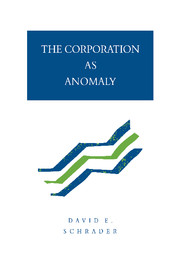Book contents
- Frontmatter
- Contents
- Preface
- Introduction
- 1 The hidden change in economic theory
- 2 Four views of scientific change
- 3 A glance at the history of economic theory
- 4 Agreement and disagreement within the tradition
- 5 Theories of the firm
- 6 Confusions and problems with the marginalist view
- 7 The shape of the large managerial corporation
- 8 The theoretical impact of a better theory of the firm
- Notes
- Bibliography
- Index
1 - The hidden change in economic theory
Published online by Cambridge University Press: 10 December 2009
- Frontmatter
- Contents
- Preface
- Introduction
- 1 The hidden change in economic theory
- 2 Four views of scientific change
- 3 A glance at the history of economic theory
- 4 Agreement and disagreement within the tradition
- 5 Theories of the firm
- 6 Confusions and problems with the marginalist view
- 7 The shape of the large managerial corporation
- 8 The theoretical impact of a better theory of the firm
- Notes
- Bibliography
- Index
Summary
The mainstream of economic theory is very often presented to us as a largely continuous and progressive development of a unitary general approach or ‘paradigm’, to use a term about which I shall have more to say later, dating back to the work of Adam Smith. A. W. Coats, for example, has claimed that economic theory has been “dominated throughout its history by a single paradigm – the theory of economic equilibrium via the market mechanism.” Similarly, D. Gordon has claimed that “Smith's postulate of the maximizing individual in a relatively free market…is our basic paradigm…economics has never had a major revolution; its basic maximizing model has never been replaced.” While one does hear talk among economists of “the marginalist revolution,” “the Keynesian revolution,” “the monopolistic competition revolution,” and so on, no one, I think, would claim that these so-called revolutions have altered the foundations of the way in which people have looked at the economic world in the same manner in which the Copernican revolution altered the foundations of the way in which people looked at the arrangement of the heavens. If political metaphors are at all apt, the above-noted changes in economic theorizing would better be viewed as changes in the ruling party in a widely popular and accepted constitutional democracy.
Whatever one might wish to say about the usefulness of Thomas Kuhn's notion of “paradigm” in the attempt to understand the history of economic thought, it is clear at least that there has been something of a common thread running through the major developments in economic theory since the work of Smith.
- Type
- Chapter
- Information
- The Corporation as Anomaly , pp. 10 - 24Publisher: Cambridge University PressPrint publication year: 1993

